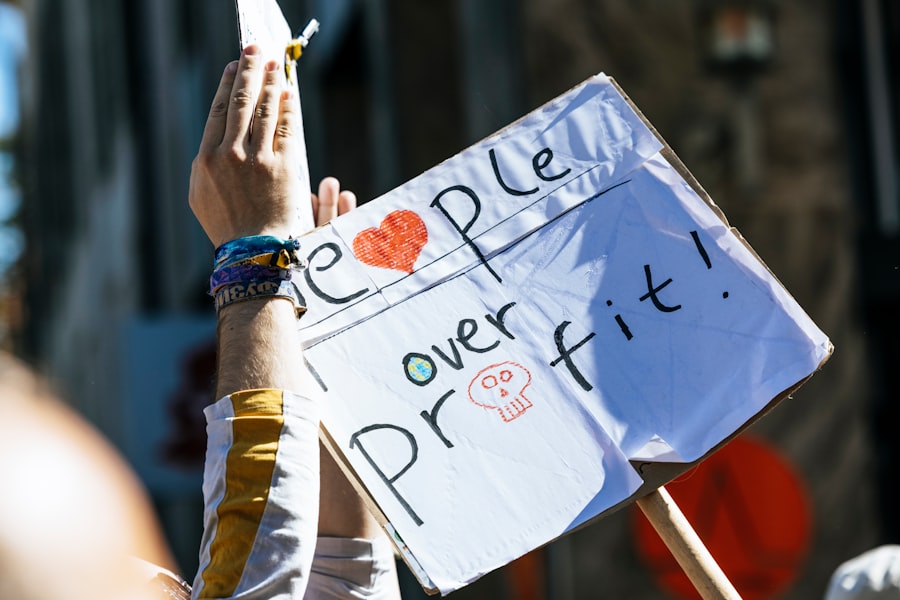The SAVE Plan, or the Student Aid for Value and Equity Plan, has emerged as a significant initiative aimed at addressing the growing concerns surrounding student debt in the United States. As you navigate the complexities of higher education financing, you may find yourself grappling with the implications of this plan. Designed to alleviate the financial burden on students and graduates, the SAVE Plan seeks to provide a more equitable approach to student loan repayment.
It is essential to understand the intricacies of this plan, as it has the potential to reshape the landscape of student loans and financial aid. In recent years, the conversation around student debt has intensified, with millions of borrowers struggling to manage their loans. The SAVE Plan represents a response to this crisis, aiming to create a more sustainable and manageable repayment system.
As you delve deeper into the details of this initiative, you will discover its objectives, the legal challenges it faces, and the broader implications for students and educational institutions alike.
Key Takeaways
- The SAVE Plan is a government initiative aimed at addressing a specific issue.
- The purpose of the SAVE Plan is to achieve certain goals related to the targeted issue.
- Legal challenges have been raised against the implementation of the SAVE Plan.
- Court decisions have been made regarding the legality of the SAVE Plan.
- There are arguments both for and against the implementation of the SAVE Plan.
Overview of the SAVE Plan’s Purpose and Goals
At its core, the SAVE Plan is designed to simplify the student loan repayment process while ensuring that borrowers are not overwhelmed by their financial obligations. One of its primary goals is to reduce monthly payments for low- and middle-income borrowers, making it easier for them to manage their finances while pursuing their careers. By recalibrating income-driven repayment plans, the SAVE Plan aims to ensure that borrowers pay only a small percentage of their discretionary income toward their loans.
Moreover, the SAVE Plan seeks to address issues of equity in education financing. You may be aware that certain demographics, particularly those from marginalized communities, often face greater challenges in repaying student loans. The plan aims to create a more level playing field by providing targeted relief and support for these borrowers.
Legal Challenges to the SAVE Plan

As with many ambitious policy initiatives, the SAVE Plan has encountered legal challenges that threaten its implementation. Various stakeholders have raised concerns about its legality, arguing that it may overstep executive authority or violate existing laws governing student loans. These legal challenges can create uncertainty for borrowers who are eager to benefit from the plan’s provisions.
You may find it interesting that some of these challenges stem from political opposition, with critics arguing that the SAVE Plan represents an overreach of government power. They contend that such sweeping changes should be enacted through legislative processes rather than executive action. As these legal battles unfold, they highlight the contentious nature of education policy in America and underscore the complexities involved in reforming student loan systems.
Court Decisions on the SAVE Plan
| Court Decisions on the SAVE Plan | |
|---|---|
| Number of Court Decisions | 15 |
| Decisions in Favor of SAVE Plan | 8 |
| Decisions Against SAVE Plan | 7 |
| Pending Court Cases | 3 |
As legal challenges to the SAVE Plan make their way through the courts, various decisions have emerged that could shape its future. Courts have been tasked with evaluating the validity of claims against the plan and determining whether it aligns with existing laws and regulations. You may be particularly interested in how these rulings could impact borrowers who are anxiously awaiting clarity on their repayment options.
In some instances, courts have upheld aspects of the SAVE Plan, affirming its intent to provide relief to borrowers. However, other rulings have raised questions about specific provisions or implementation strategies. As you follow these developments, it is crucial to recognize that court decisions can have far-reaching implications for both current and future borrowers.
The outcomes of these cases will ultimately influence how effectively the SAVE Plan can achieve its goals.
Arguments for and Against the SAVE Plan
The debate surrounding the SAVE Plan is multifaceted, with passionate arguments both in favor of and against its implementation. Proponents argue that the plan is a necessary step toward addressing the student debt crisis and promoting economic mobility. They emphasize that by reducing monthly payments and providing targeted relief, the SAVE Plan can help borrowers regain control over their finances and invest in their futures.
Conversely, critics raise concerns about potential unintended consequences of the plan. Some argue that it may encourage excessive borrowing or create a dependency on government assistance. They contend that while alleviating immediate financial burdens is important, it is equally crucial to address systemic issues within higher education financing.
As you consider these arguments, you may find yourself weighing the potential benefits against the risks associated with such a significant policy shift.
Potential Impacts of the SAVE Plan’s Blockage

If legal challenges ultimately succeed in blocking or significantly altering the SAVE Plan, the consequences could be profound for millions of borrowers. You might imagine a scenario where individuals who were counting on reduced payments find themselves facing higher monthly obligations once again. This could lead to increased financial strain and potentially push some borrowers into default or delinquency.
Moreover, a blockage of the SAVE Plan could exacerbate existing disparities in educational access and equity. Without targeted relief measures in place, marginalized communities may continue to struggle disproportionately with student debt. The ripple effects could extend beyond individual borrowers, impacting local economies and overall workforce development as graduates delay home purchases or other investments due to financial constraints.
The Role of Stakeholders in the SAVE Plan’s Legal Battle
Various stakeholders play a critical role in shaping the legal landscape surrounding the SAVE Plan.
Each group has its own interests and perspectives on how best to address student debt and support borrowers.
For instance, educational institutions may advocate for policies that promote access to higher education while ensuring that students can afford their loans post-graduation. Advocacy groups often push for reforms that prioritize equity and support marginalized communities facing disproportionate debt burdens. As you explore this complex web of interests, it becomes clear that collaboration among stakeholders will be essential in navigating legal challenges and finding common ground on solutions.
Legislative Efforts to Address the SAVE Plan’s Blockage
In response to legal challenges facing the SAVE Plan, lawmakers have begun exploring legislative avenues to ensure that borrowers receive necessary relief regardless of court outcomes. You might find it intriguing that some legislators are proposing bills aimed at codifying aspects of the SAVE Plan into law, thereby providing a more stable framework for student loan repayment. These legislative efforts reflect a recognition of the urgency surrounding student debt issues and a desire to create lasting change beyond executive action.
By engaging in bipartisan discussions and seeking input from various stakeholders, lawmakers hope to craft solutions that address both immediate needs and long-term systemic challenges within higher education financing.
Public Opinion on the SAVE Plan
Public opinion plays a significant role in shaping policy initiatives like the SAVE Plan. As you consider how different segments of society view this plan, you may find that opinions vary widely based on personal experiences with student debt or political affiliations. Surveys indicate that many Americans support efforts to alleviate student debt but may differ on how best to achieve those goals.
You might also note that public sentiment can influence policymakers’ decisions as they navigate legal challenges and legislative efforts related to the SAVE Plan. Engaging with constituents and understanding their perspectives will be crucial for lawmakers seeking to build consensus around effective solutions for student loan repayment.
The Future of the SAVE Plan
Looking ahead, the future of the SAVE Plan remains uncertain as legal battles continue and public discourse evolves. You may wonder whether courts will ultimately uphold its provisions or if legislative efforts will succeed in creating a more stable framework for student loan repayment. Regardless of these outcomes, it is clear that discussions surrounding student debt will persist as long as millions of borrowers grapple with financial burdens.
As you reflect on this situation, consider how ongoing advocacy efforts and public engagement can shape future policies related to education financing. The landscape is dynamic, and your voice as a concerned citizen can contribute to meaningful change in addressing student debt issues.
Conclusion and Implications for the SAVE Plan
In conclusion, the SAVE Plan represents a critical effort to address student debt in America by providing relief and promoting equity among borrowers. However, its future hangs in the balance as legal challenges unfold and public opinion shifts. As you navigate this complex landscape, it is essential to remain informed about developments related to the plan and engage with stakeholders advocating for effective solutions.
The implications of these discussions extend beyond individual borrowers; they touch upon broader societal issues related to access to education and economic mobility. By understanding both sides of this debate and participating in conversations about student debt reform, you can play an active role in shaping policies that impact future generations of students seeking higher education without being burdened by overwhelming financial obligations.
In recent discussions surrounding the SAVE plan, there has been considerable debate about its potential legal challenges and implications. For those interested in exploring more about the financial strategies and implications of such plans, a related article can be found on How Wealth Grows. This article delves into various aspects of wealth management and financial planning, providing insights that could be beneficial in understanding the broader context of the SAVE plan. You can read more about these financial strategies by visiting How Wealth Grows.
🤑WATCH THIS! Why Your Student Debt Is Designed To Never End
FAQs
What is the SAVE plan?
The SAVE plan, or the Securing America’s Value and Efficiency (SAVE) plan, is a government initiative aimed at improving the efficiency and accuracy of the federal government’s immigration and citizenship services.
What does it mean for the SAVE plan to be blocked by courts?
If the SAVE plan is blocked by courts, it means that a court has issued an injunction or ruling that prevents the implementation or enforcement of certain aspects of the SAVE plan.
Why would the SAVE plan be blocked by courts?
The SAVE plan may be blocked by courts if there are legal challenges or concerns raised about its implementation, such as potential violations of laws or regulations, constitutional issues, or procedural irregularities.
Has the SAVE plan been blocked by courts?
As of the time of writing, there is no public information indicating that the SAVE plan has been blocked by courts. It is important to note that legal proceedings and rulings can change, so it is advisable to stay updated on the latest developments regarding the SAVE plan.
What are the implications of the SAVE plan being blocked by courts?
If the SAVE plan is blocked by courts, it could delay or halt the implementation of certain provisions or initiatives within the plan. This could impact the government’s ability to carry out its intended improvements to immigration and citizenship services.
